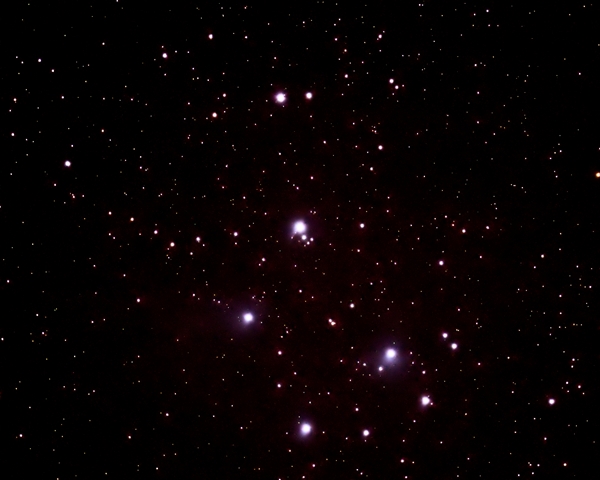PLEIADES OR THE "SEVEN SISTERS CLUSTER" (M45)
2015 February 21, 10:37 p.m. EST (Feb. 22, 03:37 UT)
Rosemary Hill Observatory • Bronson • Florida
« RETURN TO THE MAIN RHO PICTURE PAGE »
RETURN TO STAR CATEGORIES
RETURN TO PICTURE CATEGORIES
Images © 2004–2015 H.L. Cohen
Email Cohen followed by @astro.ufl.edu
Last updated 2015 May 18
2015 February 21, 10:37 p.m. EST (Feb. 22, 03:37 UT)
Rosemary Hill Observatory • Bronson • Florida
 Photo Details 2015 Feb. 21, 10:37 p.m. EST TeleVue 127 mm, f/5.2 APO Refractor, Foc. Len. 660 mm Camera: Canon DSLR EOS 5D II, Exposure 30 sec, f/5.2 (ISO 1600) |
OBSERVATIONAL CHALLENGES
The Pleiades is easily seen by the naked eye. People unfamiliar with the sky often mistake this grouping of stars with a well-known asterism. Which asterism is this? ANSWER HERE |
« RETURN TO THE MAIN RHO PICTURE PAGE »
RETURN TO STAR CATEGORIES
RETURN TO PICTURE CATEGORIES
Images © 2004–2015 H.L. Cohen
Email Cohen followed by @astro.ufl.edu
Last updated 2015 May 18